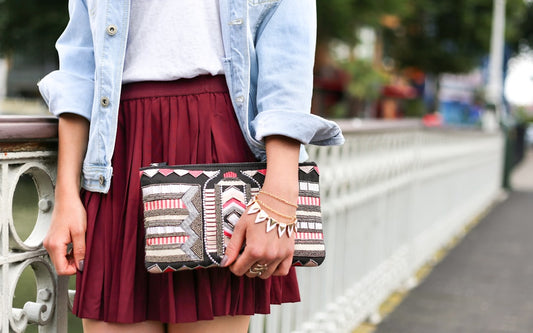It's not only luxury accessories and handbags that are being duped and sold online. Because of the popularity of contemporary labels such as Zimmermann and Self Portrait slews of exact but not quite copies have appeared on resale platforms such as eBay and Amazon.
Even at lower prices manufacturers in china can still make a healthy profit margin on “designer” labels. So these items are often listed at steep discounts to attract fans of the brand.
Nothing is worse than opening up an obviously in-genuine item that you thought you had bought at a bargain price. Follow these tips to know when a dream deal on a designer dress is too good to be true.
Multiple sizes and quantities
A dead giveaway for a fake is when a reseller has multiple sizes and variations of a garment. The likelihood of a genuine reseller or consignment store finding many identical articles of clothing is obviously very low. Especially if the item in question is from a past season or no longer for sale. If the retailer is on open platforms like eBay where anyone can create an account; then the items are probably fakes.
Low quality/Incorrect details
This can be harder to tell without seeing the item in person, but if the fabric or colours look off or the embellishments and buttons feel light or cheaply made then the item is probably a fake. If the brand has a store in your area, it may be a good idea to visit and try on the clothes so you can get a feel for the level of quality of the products.
Also some brands only use branded hardware and zippers. If this is the case for the make and model of the product and the item that you have uses a YKK zipper or generic hardware then it's probably not genuine.
Sizing Tags in the Wrong Place
For Zimmerman specifically sizing tags are always attached to the right of the label as pictured here. If the sizing tag is in a different place, then it's a fake. Similarly check the care tag for typo’s, mis-spellings or incorrect designs and compare them to an item you know is real to determine whether it is genuine.

(writers own image)
Phishing Websites
Aside from false items on legitimate selling platforms such as ebay or Depop sometimes scammers go one step further and create an entire duplicate website of a brand complete with an identical set of products.
Anyone can build a website, and get it to rank on the first page of google for branded search terms. Customers click on a search ad are fooled into thinking they are buying from the real thing and hand over their personal and credit card details.
The good thing is often these sites are found out fairly quickly and shut down. But in case you find yourself in this position it is definitely worth raising a claim with your bank or payment provider.
Reporting websites like these to authorities such as Google at safebrowsing.google.com and to the actual brand takes two minutes and may even prevent someone else from being scammed!

example of a fraudulent page mimicking popular brand House of CB
What can you do?
Aside from following the tips outlined above, to avoid accidentally purchasing a fake, ask the seller to provide detailed images of the item they are selling or proof of purchase.
Also check the sellers account history; if the account is newly created or has many negative ratings from past customers then they may not be very trustworthy.
It should also be noted that if the individual is someone who is selling personal items or simply clearing out their wardrobe i.e. reselling isn’t a business or a job then it is unlikely they will be knowingly selling fakes.
If something you have purchased arrives depending on where you bought the item you may be able to lodge a complaint and ask for a refund.


1 comment
Thank you for this article. It has helped me research some items I recently recieved that I felt weren’t genuine. TYpically, I buy directly from the designer. However, I want to do my part for the environment by testing out a online cosoigner since I do not have any designer cosigners near my home. I tested The Real Real and they sent me multiple items that were not geuine/authentic. It is infuriating to have a company such as The Real Real market themselves as being ethical only to find that now I must check and return items for a refund. What is even more crazy The Real Real just settled an 11 million cash lawsuit for authtentication issues! Authentic designer items should not be such a challenge to purchase.